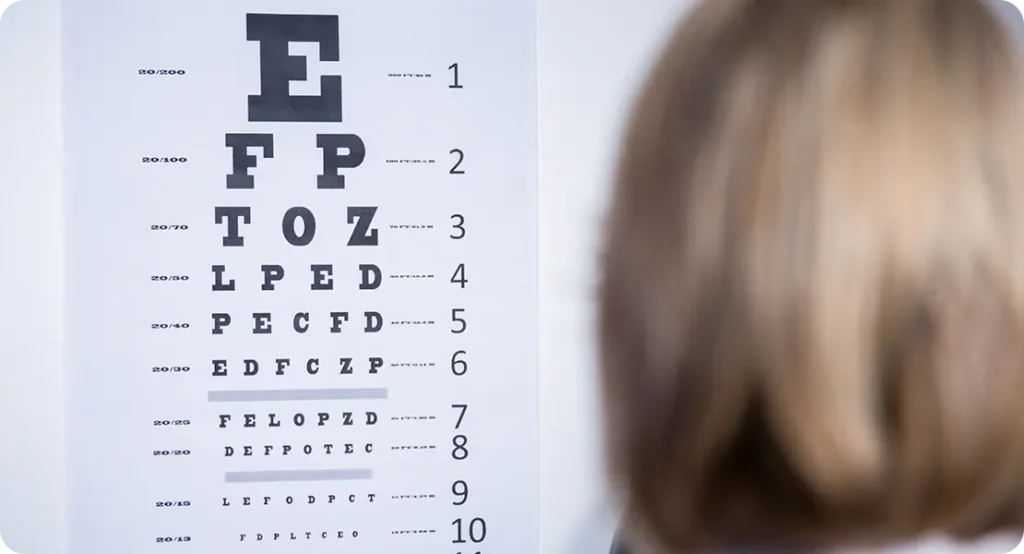Cataracts are a widespread eye condition that typically develops with age, gradually clouding the lens of the eye and leading to impaired vision. For many, the ability to drive symbolises independence and freedom. However, when cataracts begin to interfere with visual clarity, it can have a direct impact on driving ability and safety. This article explores the effects of cataracts on driving, legal responsibilities, practical considerations, and treatment options.
What Are Cataracts and How Do They Develop?
Cataracts form when proteins within the lens of the eye begin to break down and clump together, creating cloudy patches that obscure vision. This process usually occurs slowly, often starting in one eye before affecting the other. While age is the most common risk factor, cataracts can also result from trauma, prolonged exposure to ultraviolet light, diabetes, smoking, and certain medications like corticosteroids.
Symptoms can vary depending on the type and location of the cataract, but common signs include blurry vision, difficulty with night vision, faded colours, increased sensitivity to light and glare, and the need for frequent changes in glasses prescription.
Why Cataracts Are a Concern for Drivers
Driving demands a high level of visual acuity, depth perception, and contrast sensitivity. Cataracts can interfere with each of these elements, compromising a driver’s ability to make quick decisions and respond to hazards.
Particularly in poor weather or low-light conditions, drivers with cataracts may find it challenging to judge distances, detect pedestrians, or navigate unfamiliar routes. Glare from sunlight or headlights can cause temporary blinding, which may be brief but extremely dangerous. Even minor lapses in visibility can significantly increase the risk of accidents.
How Cataracts Affect Daytime and Night-Time Driving
Daytime Driving with Cataracts
Cataracts often reduce visual clarity in daylight, even when lighting conditions are otherwise ideal. The lens of the eye, which should be transparent, becomes clouded—causing images to appear soft, hazy, or slightly out of focus. This blurring can make it difficult to identify road signs, spot cyclists or pedestrians, or read number plates in time to react appropriately. In addition to the loss of sharpness, cataracts diminish contrast sensitivity, which means drivers may struggle to distinguish between similarly coloured objects or to detect low-contrast features such as faded lane markings. This effect is particularly noticeable in environments with lots of visual detail, like busy junctions or high streets.

One of the most commonly reported issues during daytime driving is excessive glare. Cataracts scatter incoming light, making bright conditions uncomfortable and sometimes painful to the eyes. Glare from sunlight reflecting off wet roads, bonnets, or nearby windscreens can cause momentary visual confusion or disorientation. In such moments, a driver might instinctively squint or turn their head away—both of which can impair attention to the road. Even in overcast or diffuse light, the scattering of light through the cloudy lens may create a generalised sense of visual discomfort. Over time, many people with cataracts begin to restrict their daytime driving to quieter roads or shorter journeys to cope with these challenges.
Night-Time Driving with Cataracts
Driving at night is often the first activity people with cataracts begin to avoid, as the condition tends to amplify the natural difficulties of seeing in low light. A healthy eye adapts to darkness by allowing more light to pass through the lens, but a cataract-clouded lens disrupts this process. The result is a dim, foggy view of the road ahead, where headlights and streetlights may appear distorted or surrounded by halos. This can make it difficult to determine how far away oncoming vehicles are or to gauge the speed at which they’re approaching. Visual distortions, particularly from reflective surfaces and artificial lights, create an unstable and distracting driving environment.
Night driving also places greater demand on peripheral vision and depth perception, both of which can be impaired by cataracts. Pedestrians dressed in dark clothing, unlit road signs, and unexpected obstacles can become harder to notice until it’s too late to react safely. For many, these difficulties are compounded by a growing sense of unease or loss of confidence while driving at night. This emotional response—combined with the visual limitations—often leads individuals to voluntarily avoid driving after dark. In more advanced cases, people may stop driving entirely, especially during winter months when dusk falls early and night-time conditions dominate the daily commute.
Recognising When Driving Is No Longer Safe
It can be difficult for individuals to accurately assess the impact of cataracts on their driving. Over time, the brain adapts to gradual visual changes, and many drivers may not realise how much their sight has deteriorated.
Warning signs that it may be time to stop driving include:
- Difficulty reading road signs or judging distances
- Frequent close calls or near-misses
- Feeling nervous or overly cautious when driving
- Comments from friends or family expressing concern
- Trouble adapting to changes in light, such as going through tunnels
Regular eye tests are crucial for detecting changes early. If cataracts are diagnosed, an optometrist can help assess whether current visual standards for driving are still being met.
- Legal Obligations and the DVLA Guidelines
In the UK, drivers must meet minimum eyesight requirements, and it is a legal duty to inform the DVLA if any medical condition affects driving ability. For those with cataracts, the key requirements include:
- Being able to read a number plate at 20 metres (with glasses or contact lenses if necessary)
- Having a visual acuity of at least 6/12 (0.5) on the Snellen scale
- Maintaining an adequate field of vision

If vision falls below these standards—even temporarily due to cataracts—it must be reported. Continuing to drive without disclosing this can result in fines, invalidated insurance, or legal consequences following an accident.
Temporary Measures to Maintain Safe Driving
For individuals with mild cataracts, it is often possible to continue driving safely with a few adjustments:
- Avoid driving at night or during bright midday sun
- Keep windscreens clean to minimise glare and improve clarity
- Use anti-glare lenses or polarised sunglasses
- Increase following distance to give more time for reaction
- Drive in familiar areas and stick to well-lit routes
It is important to note that these strategies are only short-term. Cataracts tend to worsen over time, and these adaptations may eventually become insufficient.
The Role of Regular Eye Tests
Routine eye examinations are key to identifying cataracts in their early stages. Optometrists can detect subtle changes before symptoms become apparent and advise on whether driving remains safe.
For most adults over 60, it is recommended to have an eye test at least once every two years. However, those with existing eye conditions may need to be tested more frequently. These exams not only monitor visual acuity but also assess peripheral vision, contrast sensitivity, and glare tolerance—all of which are essential for safe driving.
Cataract Surgery and Returning to the Road
When cataracts begin to significantly impact daily activities such as reading, recognising faces, or driving, surgical intervention is usually advised. Cataract surgery is one of the most commonly performed procedures in the UK and is highly effective in restoring lost vision. The operation involves removing the clouded natural lens from the eye and replacing it with a clear artificial intraocular lens (IOL). The procedure is typically carried out under local anaesthetic, and most people are able to return home the same day without the need for an overnight stay. It is generally quick, minimally invasive, and associated with a high success rate.
Although the surgery itself is brief, the recovery period is crucial for achieving optimal visual outcomes. Most patients notice a significant improvement in vision within a few days, though full recovery may take a few weeks. It’s important to follow post-operative instructions carefully, including using prescribed eye drops, avoiding heavy lifting, and protecting the eye from dust or water. Driving should not be resumed immediately after surgery, even if vision seems improved. A formal assessment of vision by an eye care professional is necessary to ensure that the legal requirements for driving are met before returning to the road.
In cases where both eyes are affected by cataracts, the procedure is usually done one eye at a time, with a few weeks between surgeries. During this period, the visual imbalance between the treated and untreated eye can be disorientating, especially when it comes to tasks requiring precise depth perception—such as driving. As a result, many individuals choose to refrain from driving until both surgeries are completed and vision has stabilised. It’s also worth noting that some people may still require a new prescription for glasses after surgery, especially if there are other underlying visual conditions present.

For many people, cataract surgery brings a welcome return to clear, bright vision. Distance vision often improves so much that glasses may no longer be necessary for driving or other routine activities. However, some individuals may still need reading glasses or correction for near tasks, depending on the type of intraocular lens chosen. For drivers, the difference post-surgery can be profound—road signs become sharper, colours more vivid, and glare less intense. With proper healing and follow-up care, most individuals find they can return to driving with renewed confidence and improved safety.
Intraocular Lenses (IOLs) and Their Impact on Driving
Monofocal IOLs
Monofocal intraocular lenses are the most commonly implanted lenses following cataract surgery. They are designed to provide sharp vision at a single, fixed distance—most often set for long-range vision, such as looking at road signs or seeing clearly across a room. These lenses do not adjust or shift focus, so while distance vision is typically excellent, patients will still require glasses for close-up tasks like reading, writing, or using a smartphone. The clarity offered by monofocal IOLs tends to be consistent, with high contrast and minimal optical interference.
Driving Impact:
Monofocal IOLs are often considered the gold standard for driving, particularly for those who drive frequently or at night. Because these lenses focus light on a single point, they offer crisp distance vision with very little glare or distortion. They are particularly well-suited for people who prioritise safe and stable visual performance behind the wheel over complete independence from spectacles.
Multifocal IOLs
Multifocal lenses are designed to reduce reliance on glasses by incorporating multiple zones of focus into a single lens. These zones allow the eye to switch between near, intermediate, and far distances with less effort. The lens achieves this by distributing light to different focal points simultaneously, which the brain then interprets depending on where attention is directed. While this provides a more versatile range of vision, some users may experience minor visual trade-offs due to light being divided across focal points.
Driving Impact:
During daytime driving, multifocal IOLs typically perform well, allowing drivers to see both the dashboard and distant scenery without glasses. However, because of the way these lenses split incoming light, some individuals notice halos around lights, glare from headlights, or slightly reduced contrast in dim conditions. For drivers who do a lot of night driving or are particularly sensitive to light, these side effects may be a consideration when choosing this lens type.
Extended Depth of Focus (EDOF) IOLs
Extended Depth of Focus lenses are a newer advancement in lens technology that aim to provide a seamless visual range, particularly enhancing intermediate and distance vision. Unlike multifocal lenses, EDOF lenses do not rely on multiple discrete zones of focus. Instead, they extend the range of clear vision in a smoother, more continuous way, which can feel more natural to the brain. While they may not offer perfect near vision without glasses, they often allow for good clarity at arm’s length—ideal for tasks like using a sat-nav or viewing a car dashboard.
Driving Impact:
EDOF lenses strike a good balance for drivers, offering strong distance vision with improved clarity at intermediate ranges—crucial for glancing between road signs and instruments on the dashboard. Compared to multifocal lenses, they are associated with fewer night-time visual disturbances such as glare or halos, making them a practical option for people who drive in various lighting conditions. They are especially appreciated by those who want greater visual freedom without the compromises that can come with multifocal optics.
Toric IOLs
Toric intraocular lenses are specifically designed to correct astigmatism, a condition where the cornea has an irregular shape that distorts vision. Unlike standard lenses, toric IOLs have built-in cylindrical power that aligns precisely with the axis of the corneal imperfection. This helps to focus light more evenly onto the retina, resulting in clearer and more stable vision across the visual field. Toric lenses are often customised to each patient’s unique astigmatism, offering a tailored solution that can dramatically reduce dependence on corrective eyewear.
Driving Impact:
For drivers with pre-existing astigmatism, toric IOLs can be life-changing. They provide consistently sharp and stable vision, which is especially important when gauging distances, reading signs, or tracking moving objects on the road. Because these lenses reduce image distortion, they can improve confidence and accuracy when driving in both daylight and low-light conditions. By addressing a long-standing visual flaw during cataract surgery, toric IOLs often eliminate the need for glasses while driving altogether.
Emotional and Lifestyle Impact of Giving Up Driving
For those unable to resume driving due to cataracts or other health concerns, the emotional toll can be significant. Losing the ability to drive can affect self-esteem, limit social interactions, and reduce access to healthcare or daily necessities. It is not just about transport—it’s about autonomy.

However, various support systems exist to help manage this transition. Public transport, community shuttles, ride-sharing services, and assistance from family or friends can all help maintain independence. Planning ahead and accessing available resources can ease the adjustment and help individuals maintain an active lifestyle.
Final Thoughts
Cataracts, while common and treatable, can have a serious impact on driving safety. Recognising early signs, staying up to date with eye exams, and knowing when to seek treatment are vital steps in ensuring that individuals remain safe on the road. With proper care, many people can return to driving confidently after surgery—but until then, caution, honesty, and professional guidance are key. If you’re concerned that cataracts may be affecting your vision or your ability to drive safely, you’re welcome to contact us at the London Cataract Centre to arrange a consultation with one of our expert cataract surgeons.

